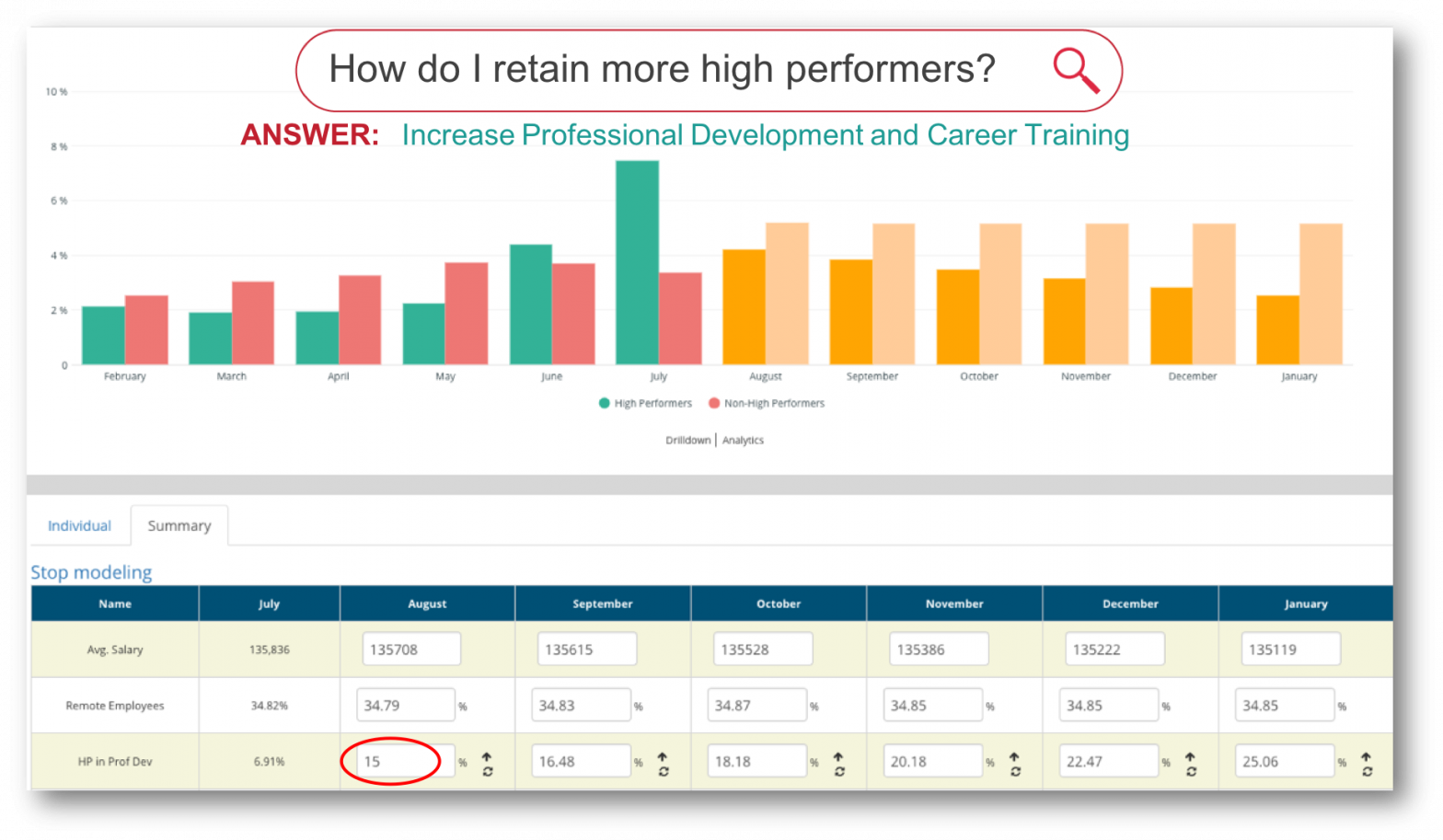The Top Five Predictive Models For People Analytics
- By: Tom McKeown
- Press and Published Articles
- October 10, 2018

The eventual goal of analytics in any field is to gain insights from historical data to make informed decisions for the future. This is accomplished by taking certain data points, or metrics, and trending them over a period of time whereby regression analysis and statistical algorithms are applied to see what the pattern will be down the road. Predictive analytics is when certain values or events can be identified and then changed in order to forecast what is likely a better future according to the user’s requirements.
People analytics is the field of determining what are the best actions to take that produce the most optimal performing workforce. There are several key metrics that companies track in order to assess the robustness or health of their workforce, and knowing what actions to take in order to improve on those metrics is critical to winning and losing in the business world.
Below are some of those key metrics and descriptions of the types of models that organizations need to employ to stay ahead of the competition in a very competitive labor environment.
Improving Retention
A key metric to most organizations is retention of workers or reducing turnover, particularly that of high-performering individuals. According to the Harvard Business Review, among the top drivers of employee turnover are salary, career advancement and work environment. These are all things that employers can control, so having access to a predictive model where a manager could see the future effects of changing any of these factors would be very useful in strengthening retention — particularly when it can show the costs and benefits of any investment.
Recruiting Long-Term Employees
Winston Churchill is known to have said, “There are two kinds of success — initial and ultimate.” When recruiting employees, making the hire would be the initial success. The ultimate success is accomplished if the individual becomes a good and successful employee. Knowing the prior experience of a candidate and the attributes of what makes a successful employee are critical to recruiting the right talent. The old rule of higher slow and fire fast does not work in a competitive labor market. Predictive models that can show where to look, what to look for, the impact of spend and the success of hires is how companies can hire fast and hire well.
Effects Of Absenteeism
According to the Bureau of Labor Statistics, the average number of days absent per employee in 2017 was 2.8. This may not seem like a high number, but for a company of 1,000 employees, that is 2,800 days per year. At an average loss of $2,650 per salaried employee who’s absent, according to Circadian, that equates to almost $7.5 million per year. Now, understanding that people do get sick, if you were able to shave one day per employee by allowing remote work, creating a more engaged workplace or providing daycare at work, the savings would be $2.6 million minus the cost of the new policies. Being able to model out such scenarios can go a long way financially and culturally.
Management And Promotions
There are many questions about the best sources, experiences and qualities that lead to an employee becoming successful in various management positions within a company. Is it better to promote from within or recruit outside talent when, according to a Wharton survey, outside recruits are generally paid 18% more? Is it worth cannibalizing great individual contributors to possibly become poor managers? Should upper executives have experience in multiple disciplines around the company before moving into the C-suite? Historical data can help build out models with actionable levers that can show the right formula and mix of individuals go into creating the best leadership team.
People Spend
A more general but useful model often requested is one that can forecast the effects of any type of spend toward future workforce productivity. Whether it is an investment into hiring additional employees, providing training, implementing new systems or improving culture, using historical analysis to forecast future returns is something that is of interest to any C-suite, line manager or HR leader.
There are many components to a productive and engaged workforce. Using people analytics to gain insights from historical data to make the most informed decisions going forward can help your company remain competitive in today’s business environment. So don’t throw darts at a board — make informed decisions about your workforce.
